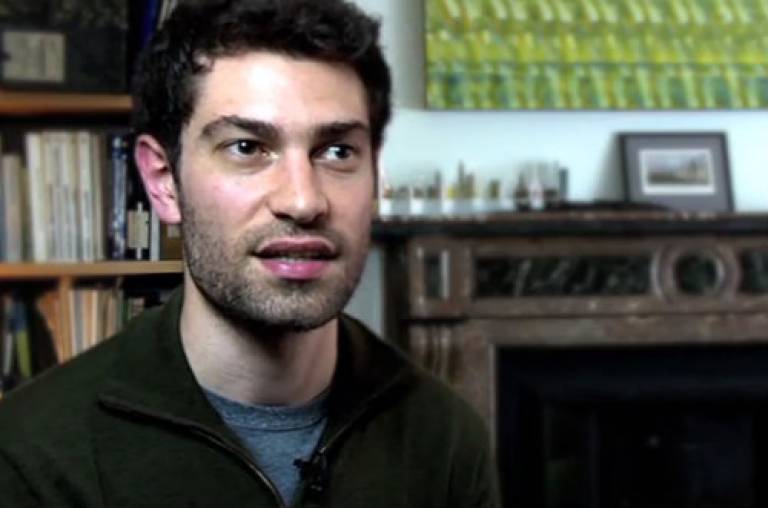Making and using video for teaching: Matthew Wood-Hill’s tips & advice
Matthew Wood-Hill (UCL Bartlett Development Planning Unit) describes how videos are being used to connect research and teaching as well as to take students “beyond just the books”.

25 August 2015
This interview is part of the ‘Lecturers on Video’ research project for Digital Education and Digital Media. The project, conducted in 2015, investigated how and why lecturers use video and what their future video requirements are for successful student teaching. A questionnaire was developed and an education producer, Dr Mike Howarth was commissioned to produce the content for the UCL Lecturers on Video research project.
A looped process that connects research and teaching in different ways
"Because the way we have been using video is to develop content for research, we then bring that into teaching activities to educate students and expose them to the kind of context that they will be working in.
We then use it, through different methodologies and techniques and tools that involve video and story construction, editing and production and ask students create their own stories, which can be for many different things; documentary purposes, for reporting, assessments and also for advocacy and awareness raising.
The lifespan of videos
They are a really useful resource once they have been produced by the students: they have their own lifespan. We also like to have it embedded within our website within a specific page devoted to that project.
There is a challenge, which is that we have to ensure a certain amount of quality within the videos and stories. We have to make sure that they are true stories, and more importantly, given the context that we work in, that they are ethically sound and are not sending out any wrong messages for example.
Videos as a way of providing context
The way we work is to integrate our recent research and teaching activities. So for example when I was in Dar es Salaam collecting footage and with the local community, members and representatives of different organisations that we've been working closely with in the city, I was seeking interviews we could then repackage for teaching purposes.
We then used this in a couple of workshops during a summer school we run in June each year with undergraduates which is part of the Global Citizenship Programme, specifically on sustainable cities.
We also run a workshop with our Master’s students each year and they have access to all of these videos to give a sense of what people are saying on the ground, and to bring them a lot closer to the context, to give a window into what the real challenges that people who are experiencing urban poverty on a daily basis are facing. Also of course the experiences and the fine work that people are doing as representatives of NGOs for example, or local governments and what they're actually doing to come up with solutions to some of those challenges.
Taking students “beyond just the books”
In terms of the feedback we've been receiving from the students, they're very keen to flag up how this takes their learning beyond just the books. It takes them out of the classroom in a sense because it gives an insight into emotions, into individual people's perspectives and how they deal with the challenges they face on a daily basis."
 Close
Close

